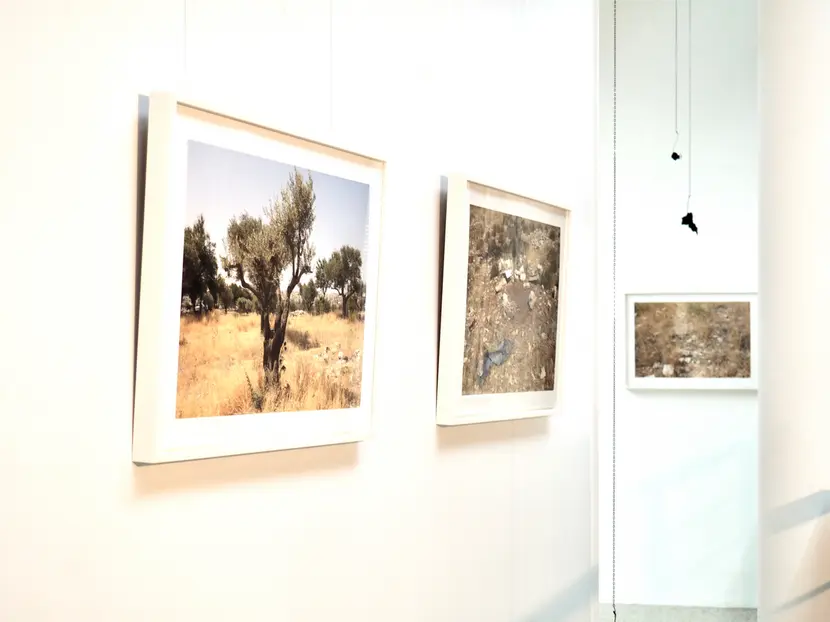RESEARCH TALK ▼
WHAT IS MORE IMPORTANT THAN THINKING IS WHAT MAKES YOU THINK
AN INTERVIEW WITH SIRI HERMANSEN | by Katrin Bernsdorff
:::::::::::::::::::::::::::::::::::::::::::::::::::::::::::::::::::::::::::::::::::::::::::::::::::::
SHORT PROFILE
Name: Siri Hermansen
Field: Artistic Research
Country: Norway
Occupation: Artist
Research Interests: Affects in societies that are undergoing
deep economic, environmental or cultural changes
:::::::::::::::::::::::::::::::::::::::::::::::::::::::::::::::::::::::::::::::::::::::::::::::::::::
▐ What is more important than thinking is what makes you think. Siri Hermansen cultivates this idea by investigating social issues and their economic, cultural and environmental changes. The Oslo-based artist uses the approach of an artistic researcher with an intimate aesthetic. The shown works combining photography, film and installation provide a micro-perspective into the territorial conflict of Israel and Palestine and the impact on cross-border commuters and the breeding-sites of birds. In collaboration with Villa Concordia doctoral students and professors of the Graduate School met Siri Hermansen for an artist talk and visited her exhibition "Dreaming in the Stonebed Valley" that was shown at Villa Concordia.
How did you get involved with art in the first place?
S.H. I was living in Italy for six months and I was going to learn Italian and I was so bored so I went to the Art Academy there and asked a professor if he could teach me how to draw and he said yes so I just loved it. I applied to Art School and got in straight away. Then I went back home to preparatory school and when I fell in love I moved to Paris and studied there.
Can you describe your body of work or, in other words, the kind of art you create so that we can get a better picture?
S.H. Yes, I think in the last ten years I have been interested in places that have gone through large processes of change either politically, environmentally, culturally or economically. So I've been interested in what things changes constitutes, what does change look like, what does it look like visually when deep change takes place that affects a lot of people. And as a single artist it is these broad prospects that really affects a large amount of people that interests me. Often in places that have been overexposed in the media like Chernobyl or Detroit.
I've done two big projects about Lapland, how the international mining industry is taking over the land of the Sami people and nobody is talking about it although it is taking place right now. And because of these big projects I was invited to Jerusalem, to Israel to do a project about the conflicts. My way of working, my motivation to go into this large scale, politically difficult conflictual territorial places is based on my background, on my family. I was raised in a very politically engaged family, my father was working for the government. I was a child of the Cold War and I was very terrified of this war. We were also tapped, we found microphones at our house and we didn't know if it was like Russians or Norwegians tapping us. I was very curious about how is life, how is Communism, how is it to be a person living in a Communist country? It was really marking. So that's how I sort of became interested. First I went to this island, Spitzbergen, as far north as you can go, and there is a Russian coal mine city that was abandoned. Have you been there? [someone from the audience: "No but I have seen pictures."]
Yeah it's called the Pyramid and it was during three months that it was abandoned and they left everything behind. So this was the first project where I did this sort of research. It was so difficult to get there. We were riding snow scooters and I'm really not a wildlife woman at all. We got there and I documented this place and then Chernobyl followed which also was about, out of this catastrophe. I thought I would find the same amount of things but everything was destroyed. This was my first project for my PhD so I was desperate. I was there, I was going to stay over, I had booked the guide for three days and I just knew: there's nothing here, I don't know what to do. I was really scared, you guys know, when you're desperately trying to be a clever PhD student. Luckily, I realized that I had a good chemistry with my guide. It was not allowed to eat together in the evening but we were living in the same hotel, in the same building and luckily he was alone. So we managed to get all the food together and we drank a lot of vodka and talked about the real stuff, about how life was like in Chernobyl. And then he told me: To him Chernobyl was his paradise. And I was so moved.
This whole sentence shaped my PhD project because I realized that if you speak with people and take their word seriously you can find a part of reality which is outside of reason somehow but which is still human. So I told him: "I want to come back, I want to be with you and talk about love, life, Chernobyl, death. I want to do what you do when you are here, when you love this place. I want to be with your friends and hang out." And I paid him quite a lot of money, not a lot, but I paid him what I would pay him if he was driving me around so he could be free. So we went fishing and we went with friends. This was my first project which informed my method which is to go somewhere, to be guided from a subjective perspective and this micro perspective gives an insight into the large scale problematic. So I talked nearby the catastrophe but not about the catastrophe because I was really criticized. "Why the hell are you going to do Chernobyl, why are you going to Detroit? Everyone knows everything about these things." But I actually managed to find… also the ethical thing - it's not my (country) why are you going, why do you want to be in someone else's shit somehow? But then I realized that I wanted to go to Detroit. Which is the opposite of Communism, it's Capitalism. And Detroit is of course very destroyed economically but it's also not in ruins. There, I lived with a group of urban farmers and I participated in their daily life activities and filmed everything and we talked also about life and death and love. I try to create… you know few times in your life when you suddenly meet someone and you have this connection and you share from the depth of yourself. This is what I try to share when I do these research groups. I also give a lot of me.
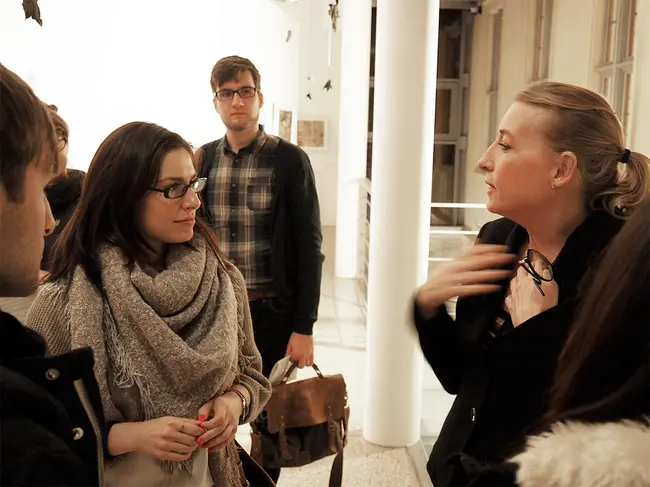
How do you manage to take these vast personal experiences as well as political facts and transform them into an artwork which is a photograph, a film, a sculpture for instance. How do you do this as a creative process and how do you make choices? I think for our students writing a PhD thesis and creating an artwork could be a similar process. How do you make choices and know: This is the right choice to transform what you experienced into an artwork?
S.H. I've been very interested in [Gilles] Deleuze, who is talking about how feelings can be a catalyst for deep thinking and while I observed myself being desperate in Chernobyl, not finding what I was looking for, I really followed my gut feeling and he says that what is more important than thinking is what makes you think and things that make big impressions on you make you think and react. So I have been cultivating the idea of this emotional side, how this makes me think. I've trusted it more and more. I trust that what I am seeing will also be interesting to others. So I make choices base on this emotional - of course mixed with thinking and politics – but I try to really be, I don't want to moralize in my art. I want the people who see my art to make up their own mind. This is really important to me. This is my ethics.
Okay, so you have an ethical framework.
S.H. It's very important to me that I don't trespass ethical barriers and that I don't put my guides into a vulnerable situation.
And how do you decide on the format? You use different formats – you have photography; you have sculpturing; you use film – so how do you know when to use what?
S.H. It's also a lot of experience. In this exhibition there are hanging black leaves from trees and this comes from today because I really the love the Regnitz and I love this park and I have felt quite lonely here. And in this exhibition, I wanted some of the depression which I could feel in Israel, I wanted to transform this and I could use my feeling here, of loneliness in this exhibition. Because this autumn there's flying leaves everywhere. I am a very empathic person and I can use my own emotions, like actresses. I can visualize my own emotions and others' emotions. I think that's a visual artist's talent somehow. But you know if it's working or not. It's always a risk.
Using this exhibition as an example, you took the photographs in Israel, in Palestine, obviously and you told us now that you created the leaves here. How long is the process - do you have an idea in the beginning of what you want to do?
S.H. No.
How long is the process until you can say: Now I have a finished artwork?
S.H. It takes a long time actually. Because when I have done a research trip it takes almost a year to transform it into a film or a big exhibition because I get so attached to the people that I am with that I almost cannot – I need to think and feel and decide…It takes a long time. But almost always what I think I'm going to do in the beginning is what I'm doing. So I have told myself: You can be faster, you can be more productive, you can trust yourself more and just do it but I like that it takes quite a long time because I want to be sure that I don't make a mistake because it's about peoples' lives. And what I am dealing with in all my artworks is survival strategy and how people adapt to these catastrophes and it is important to me that I don't make a mistake. That I can really show my films. The Chernobyl film is like 5, 6 years old and I am still really proud of it. It is really horribly filmed because I didn't know how to film and I can't film but I do it anyway.
It's very well done.
S.H. No it's not but I do it because I want to. And that is what I'm good at. I'm really good at doing what I want. But the result is – in the beginning people are like: Fuck, this is such a bad movie. This is so badly filmed that you can't show it. But it's this little string of what they talk about, how this place is paradise, how they laugh about death. Or in Detroit how they are so clumsy doing their farming or when they're having this rabbit killing there and this rabbit is (all over the place) and they are just screaming when the rabbit gets hit in the head but its so human to not be perfect and I think it doesn't matter that it looks crooked because it fits what I show. It has become a style.
Was there a different work process for you if you do an artwork or if you do artistic research for your doctoral thesis?
S.H. Yeah I think. Like probably all of you feel, it is very stressful to be a doctoral student. I think it has been extremely developing for me as an artist. I am a much better artist now, I am much more courageous, I trust myself a lot more but it's really tough. It's like you are really alone. I think the most important thing for me doing this doctoral thesis has been to have a supervisor. Especially one who was fantastic. She has been so fantastic, I love her. It's a big deal. If you have a good relationship to your supervisor it can really make you a fantastic scientist. But if you have shitty supervisors, you have a problem because you don't keep going in the best possible way maybe. So I think you have to make sure you have a great relationship to your supervisor and that they take you seriously and that they make you better, together we win. I really think it’s important. Because you do this once in a lifetime and if it doesn't work you should switch.
Why did you choose to achieve a doctoral degree?
S.H. In Norway it's a really small programme, it's only one programme and it's really hard to get it so of course it's really prestigious to get it. It's ten places a year and you compete with composers…all the art forms, which is of course very prestigious. But I didn't think I would ever apply before I realized that I'm actually doing research. And it had to do with maturity, I couldn't have done it earlier.
Yes, you took some time for yourself. I think you had your Masters degree in 1997, right? And now you did your doctoral degree.
S.H. Yes, and I spent a long time. I am really late. But I got such an opportunity due to this thing. And I thought: I'm not going to be this – my professors probably don't want me to say this – but I wanted to take all the opportunities that this programme actually gave me. I am doing it for my art. I am not doing this because they want me to become a professor at the Art Academy. I want to be a wonderful artist. I want to show my work everywhere. This is my goal. And their goal, the programme's goal is that I'm going to be a great teacher. But actually I've decided that I'm not going to teach. I want to spend my creativity on myself. I think it's great to teach but it also eats your energy. Because if you want to be a great teacher, then you really have to be a great teacher, you know? It's such a big difference. And then you have to put your career on the side. So I think you have to choose, you can't do both things. I'm sorry.
There’s nothing to be sorry about, I think these are words of wisdom and everyone can choose their own path.
S.H. But the European education system right now is trying to make everyone the same and I am so against it.
I would like now to switch a bit to your exhibition "Dreaming in the Stone Bed Valley", can you give us some insights into what is behind it and why you chose to come up with this exhibition?
S.H. I was invited to be in Jerusalem for six weeks. And it was all paid by the Norwegian government, it's not Israeli money, which is very important for me to say. It's not a propaganda exhibition. It's a fellowship. It's probably the best residency I’ve ever had because I had everything that I wanted. I could meet with anybody I wanted to, I was teaching at the Art Academy, I was also meeting museum curators and stuff but I also told them: I want to see as much as possible of the conflict and I was there, we were travelling there. And it was so dramatic that we almost went home because it was the summer of 2014 and two days after we arrived, three Jewish boys were kidnapped and they were killed so these massive riots started. And it's so tiny, Israel, this was not far from Jerusalem where we were living. People were stamped and finally they found the kids and the mothers would cry, it was everywhere on the news.
I was with a Palestinian photographer who was working for a Jewish newspaper, he had been shot in the face by Israeli police during the job while he was covering the demonstration. I was invited to go demonstrate with Israeli activists, I was really in the middle of everything. But I was also really scared. In all these situations when I'm doing my research, I put myself at risk. As a general rule, I was alone with these men, I didn't know them. In Detroit it was very dangerous and in Israel as well. It was, by chance, very dangerous. I was filming everything but I realized that I don't want to be a journalist. I was going with these photographers and the were really sticking their cameras in the face of these poor mothers. I thought it was disgusting. I also realized that very often I find artists so interesting. I met this group of artists and one of them said: "You have to meet my brother, he created this bird sanctuary 20 years ago in protest to the all the building activity on the West Bank because they are occupying land all the time." So this artist, this male artist, together with his friend and bird scientist, they were protesting because the building activity was taking away the land of migrating birds. Maybe I shouldn't say so much about the film but I thought this was so beautiful.
The story of this bird sanctuary tells also the story of how activism and protest gets so worn out during long term catastrophes or conflicts. And you will see in the film that it is now situated just below the Knesset (Prominent location near Israel's Capitol Hill and the Supreme Court) while the urbanisation of rural areas continues. It has been upswerved by the politics. In accepting this, they are accepting the Israeli politics, accepting the opposite of what they were protesting 20 years ago. And they still call themselves activists – but they are not. It's this numbness that appears. I thought it was really painful to watch how proud he was of what he had accomplished. I wanted to show this paradox. ◼
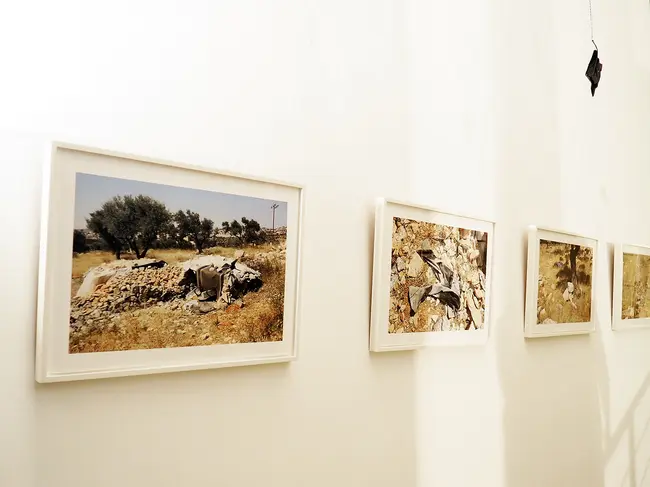
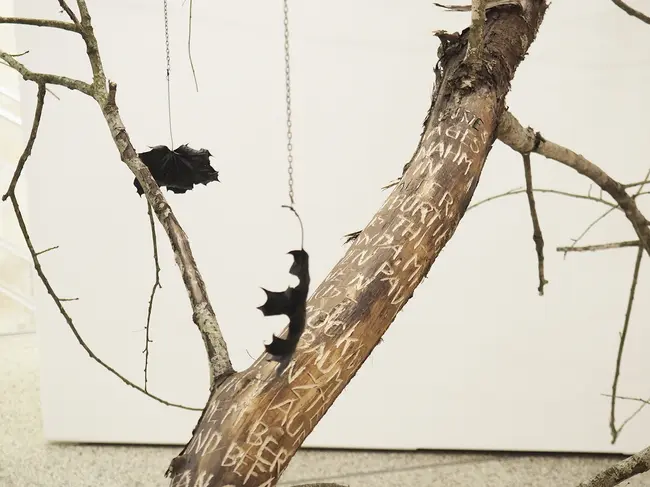
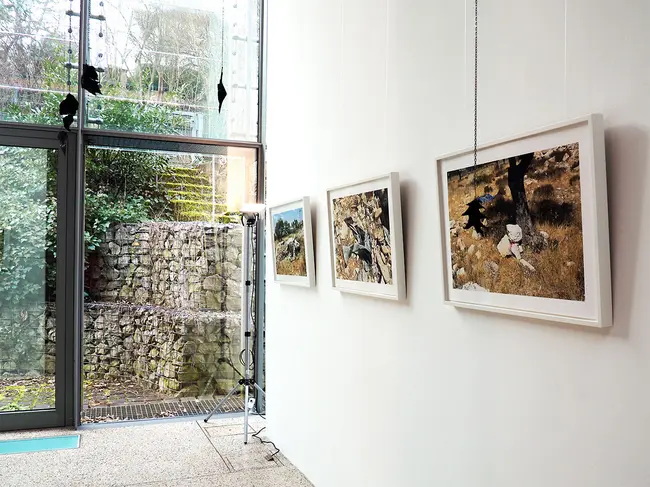
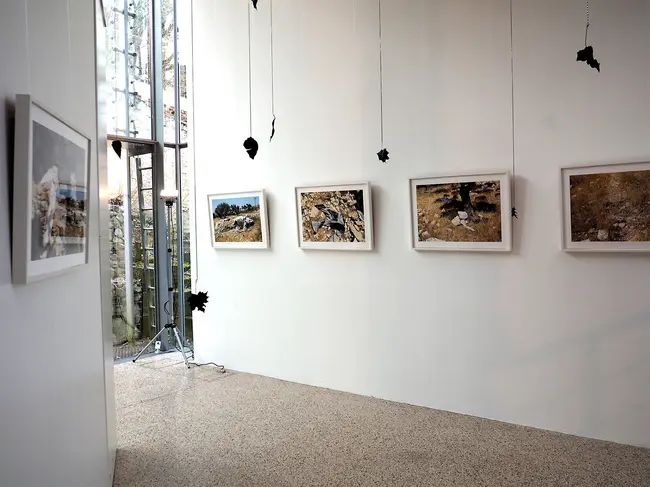
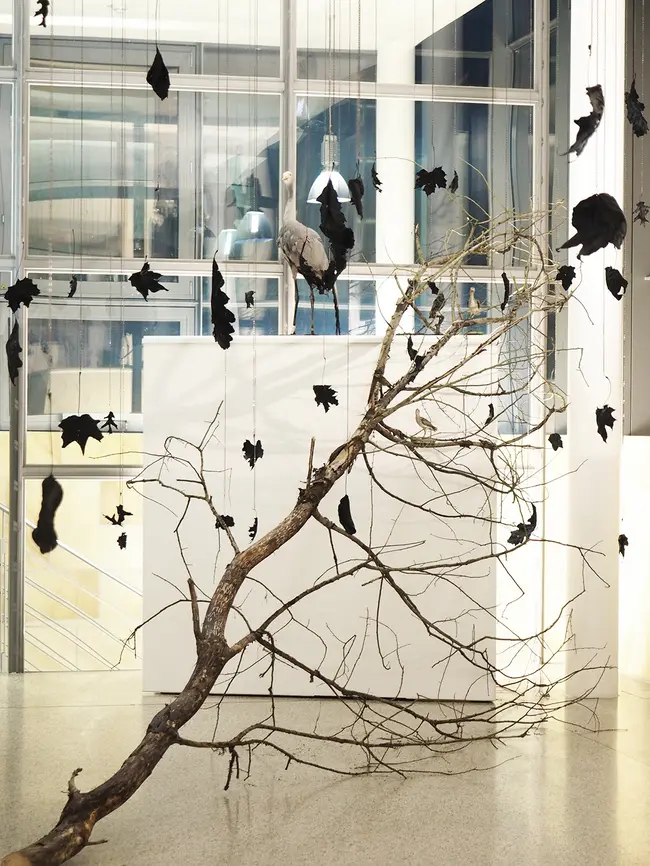
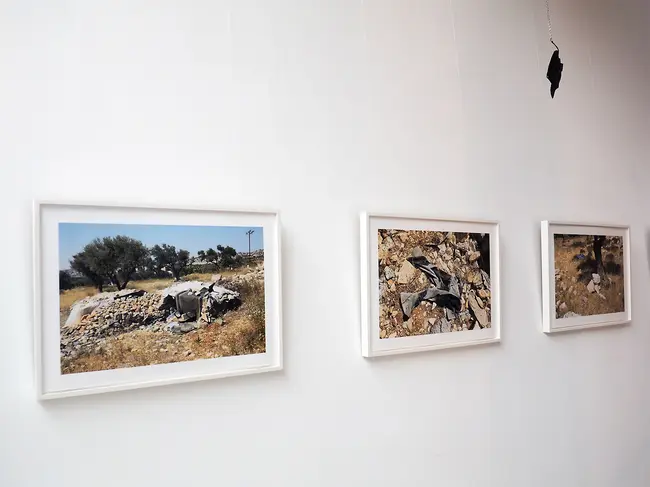
........................................................................................................................................................
MAIN PAGE | CONTACT | LEGAL | PRIVACY POLICY | DATENSCHUTZ | IMPRESSUM
© Bamberg Graduate School of Social Sciences
Image Credits: © Katrin Bernsdorff

